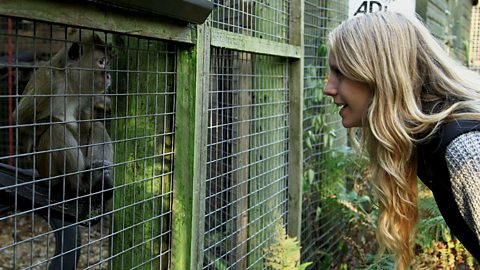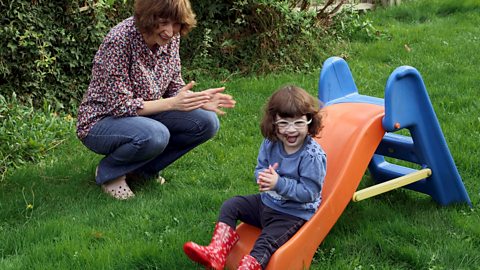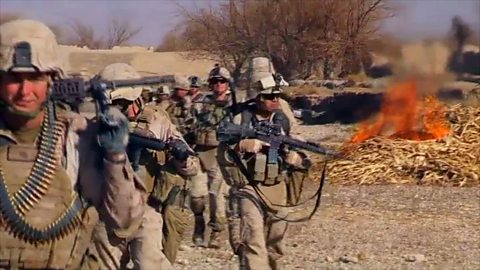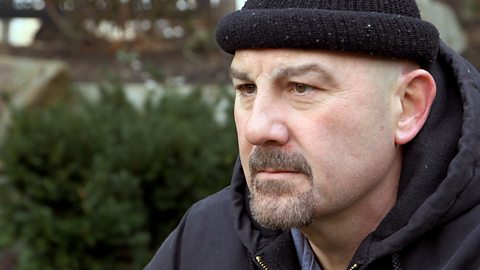Video summary
When Ami's young son Jivan was diagnosed with Wiskott-Aldrich Syndrome, a rare immune deficiency disease, she decided to give birth to another child, a saviour sibling, in order to save Jivan.
However, Simon, a biochemist, believes that a child should never be created for their genetic material, and that there should be laws to prevent this happening.
This poses the question: Is it okay to have one child to save another?
The term ÔÇÿsaviour siblingÔÇÖ refers to the practice of deliberately bringing a new baby into the world, with the purpose of using them to save the life of a sibling. The process involves using IVF, to preselect embryos with a genetic match, which stand the greatest chance of success in curing the specific illness.
Although the practice is rare, it calls into question the ethical basis of creating life in order to save another.
This short film outlines two contrasting viewpoints, prior to exploring a range of religious beliefs, thus allowing students to develop an understanding of both religious and secular views and to explore their own beliefs in relation to the issue.
This clip is taken from the ┤¾¤¾┤½├¢ Two series, Matters of life and death.
PLEASE NOTE: THIS FILM CONTAINS SOME UPSETTING SCENES. TEACHER REVIEW IS RECOMMENDED PRIOR TO USE IN CLASS.
Teacher Notes
The clip provides two contrasting views towards the use of a ÔÇÿsaviour siblingÔÇÖ.
Ami believes that having a saviour sibling is acceptable in order to save another childÔÇÖs life. She presents this from the standpoint of a mother whose son developed a rare, life-limiting disorder. As a baby, a severe rash spread all over his body, which prevented him from going outside or touching anything due to the risk of infection. He was not expected to live past the age of ten.
Ami had a daughter via IVF so that she could create a 100% genetic match and provide bone marrow to her brother. The procedure was successful, her son is now cured and living a full life. Ami would have done anything to save her son and, as she was planning on having more children, believes this does not place less value on the life of her daughter.
Contrastingly, Simon is a biochemist who believes that children should be seen as humans first, not objects to be used for their genetic material. People should be valued for who they are not what they can do outside of themselves. He believes that in the case of saviour siblings, the ends do not justify the means.
As a father, Simon experienced a time when he too would have done anything to save his son, when he was in intensive care. However, he believes that parents are not best-placed to make ethical choices concerning rules and laws about what should be permissible. SimonÔÇÖs main concerns about the use of saviour siblings come from the potential psychological effects of being born with the purpose of saving another; particularly if they cannot be saved. In addition to this, the sibling would have no choice over what happened to them and what medical procedures they were involved in.
The clip concludes with representatives from various faiths explaining their views on ÔÇÿsaviour siblingsÔÇÖ and linking them to their belief systems.
Before watching the film:
Issues addressed within the clip may well personally affect students within the classroom. You should preview the footage in order to familiarise yourself with the content and enable you to pre-warn students of its sensitive nature. Specifically, there is content which describes the suffering of children, and images which evidence physical symptoms and medical intervention.
Students may have experience of genetic disorders themselves, or within families, students might not have biological siblings such as those born via donor IVF or those adopted into their family. You will need to approach these subjects with sensitivity, reminding pupils to be empathetic towards others were there are differing viewpoints. You may find it beneficial to discuss the following:
- What is an ÔÇÿethical issueÔÇÖ?
- What should form the basis of out ÔÇÿethical decisionsÔÇÖ?
- What is quality of life?
- Discuss the terms ÔÇÿgenetic disorderÔÇÖ, ÔÇÿembryologyÔÇÖ, ÔÇÿbone marrow transplantÔÇÖ and ÔÇÿIVFÔÇÖ.
During clip:
You may find it beneficial to pause the video in order to check for understanding. The following questions make useful discussion points:
- How might it feel knowing that you were born in order to save someoneÔÇÖs life?
- What does Ami mean by ÔÇÿreincarnationÔÇÖ?
- How might AmiÔÇÖs religious beliefs support her decision to have a saviour sibling?
- Would a parent feel differently about a child born to save another?
- Do humans have the right to design life to suit our own purposes?
- What happens to the embryos not selected during IVF? Is there a moral issue with this outcome?
- Does a parent have the right to make medical decisions on behalf of their child?
- Should children be given the choice as to whether they are involved in medical procedures, particularly if they are not to benefit themselves?
- Should we use all our scientific capabilities, no matter what the ethical implications are?
- Is there a difference in choosing the genetic make up of a child for medical purposes, as opposed to selecting gender, hair colour or intelligence?
- What impact could genetic engineering have on the future of our world?
- If utilitarianism were applied, would it make having a saviour sibling morally acceptable?
Following on:
You could support students in consolidating their learning, deepening their understanding of the issue and applying exam skills in context. Suggested tasks:
- Lead a class discussion or debate around the question ÔÇÿIs it ever right to have a child in order to save another?ÔÇÖ. This could be informal or more structured. The class could be divided into smaller groups and students could be asked to research arguments to represent a particular viewpoint e.g. Humanist, Hindu, Sikh. Alternatively, students could be asked to do their own independent research with some guidance, in order to participate in a free-flowing debate. This could also be carried out in the form of a ÔÇÿsilentÔÇÖ debate, having students write down their responses on large sheets of paper or tables. Students could be encouraged to respond to each other to develop evaluative skills.
- Signpost students to relevant cases within the media. Ask them to present their findings to the class. How has genetic engineering developed over the past decade. Are these developments for the better?
- Students could be given other examples of the use of genetic engineering to consider. They could then evaluate under which circumstances they would sanction the use of such technology. As an extension, students could then be asked to apply beliefs from the religions which they have been studying to each specific example and evaluate them.
- You could present students with a collection of scripture or religious teachings relating to the religions which they are required to study. This could be in the form or a card sort (separating those arguments for and against) and they could then be asked to explain the rationale behind their choices.
- Organise and deliver a carousel task, allowing students to collate information regarding different religious viewpoints. This could be related to specific questions or they could be asked to fill out a grid which they could use to compare beliefs.
- Facilitate an in-depth study into one religious perspective (individually or in groups) and present this to the class who could take notes.
- Students could be asked to complete a ÔÇÿVenn DiagramÔÇÖ to enable them to compare and contrast religious viewpoints.
This short film will be relevant for teaching Religious Studies.
This topic appears in OCR, Edexcel, AQA, WJEC KS4/GCSE in England and Wales, CCEA GCSE in Northern Ireland and SQA National 4/5 in Scotland.
Is it ever right to experiment on animals? video
Christina's and James' life experiences have left them on different sides of this debate. Representatives of different faiths and religions are also featured, explaining their perspectives on animal testing.

What are the rights and wrongs of abortion? video
An exploration of some of the ethical and moral questions around the issue of abortion, focusing on Anna and Marie, whose life experiences have left them on contrasting sides of the debate.

When is it right to go to war? video
We hear responses to this question from two people with contrasting opinions. This is followed by various perspectives on the question from religious and humanist leaders.

What are the rights and wrongs of the death penalty? video
An exploration of the ethics around capital punishment. Representatives of different faiths and religions explain their perspective on the death penalty.
